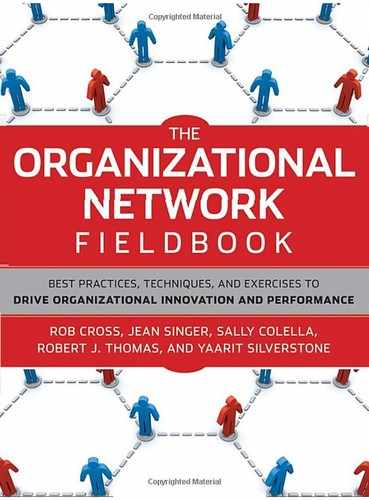Chapter 14. THE INNOVATION LAB: BUILDING IDEA-SHARING NETWORKS
Jean Singer and Kristi Droppers
Too often, a firm's potential for innovation goes unrealized because it is unable to combine the ideas, energies, and skills of people working in disconnected pockets of the organization. Differences in function or region, or even in demographics such as age and gender, can separate people into homogeneous pools and inhibit the stimulating exchange of ideas. Whether it involves an R&D scientist and a member of the company's real estate department who together recognize an opportunity to turn empty office space into sites for start-up companies, or a Gen-Xer and a senior manager who figure out how to use Facebook to reduce employee turnover, the ability to cross boundaries and share skills and experiences can unleash unexpected and potentially powerful ideas. The challenge for many companies is facilitating such diverse and fruitful cross-boundary exchanges.
That was precisely the challenge for the Information Technology and Services (IT&S) group in a large pharmaceutical company, which we will call Pharmanetics, as it launched a strategic focus on innovation. The company as a whole had embarked on an initiative to accelerate the time to market of new, innovative medicines in the quest to recapture the leading market position it had once held. To achieve its goals for the new-product pipeline, the company needed to rethink all aspects of its operations, from the discovery of new molecules in research to their full-scale production in manufacturing. Innovative new products were the ultimate goal, but the company realized that the timely discovery and development of those products would require innovation to be an integral part of everyday processes.
One of the company's core strengths was its workforce. Most Pharmanetics employees possessed top-flight academic credentials, seemingly inexhaustible drive, and intellect of the highest caliber. However, the company was not able to realize the full value of these talents. People operated within fairly segregated organizational units and lacked systems and practices for easily sharing knowledge across organizational lines.
The IT&S group took the lead on opening up the organization's knowledge-sharing channels with an intervention called the Innovation Lab. The purpose of the Innovation Lab was to facilitate cross-boundary interaction and fuel the company's innovation process by building idea-sharing networks among creative people working in diverse corners of the organization. Although not a permanent physical space, it was intended to function as a laboratory where, in a series of facilitated workshops, people who wouldn't typically encounter one another in their day-to-day jobs could experiment with novel ways of working together.
The Innovation Lab accomplished two goals at once. First, it built community among a core group of creative thinkers residing in different parts of the company. Second, it unleashed the group's talents to help solve a real-world problem—namely, increasing the organization's capacity for innovation. As group members worked together on shared problem solving, they forged ties of familiarity and trust. The end result was both a well-connected base of innovators and a set of recommendations for promoting innovation throughout Pharmanetics. Also, the impact of the Innovation Lab continued after the initial set of workshops, as group members "virally" promoted a creative mindset and new methods for idea generation; continued to extend and strengthen their networks; and acted as champions for the recommended changes in work processes and policies.
